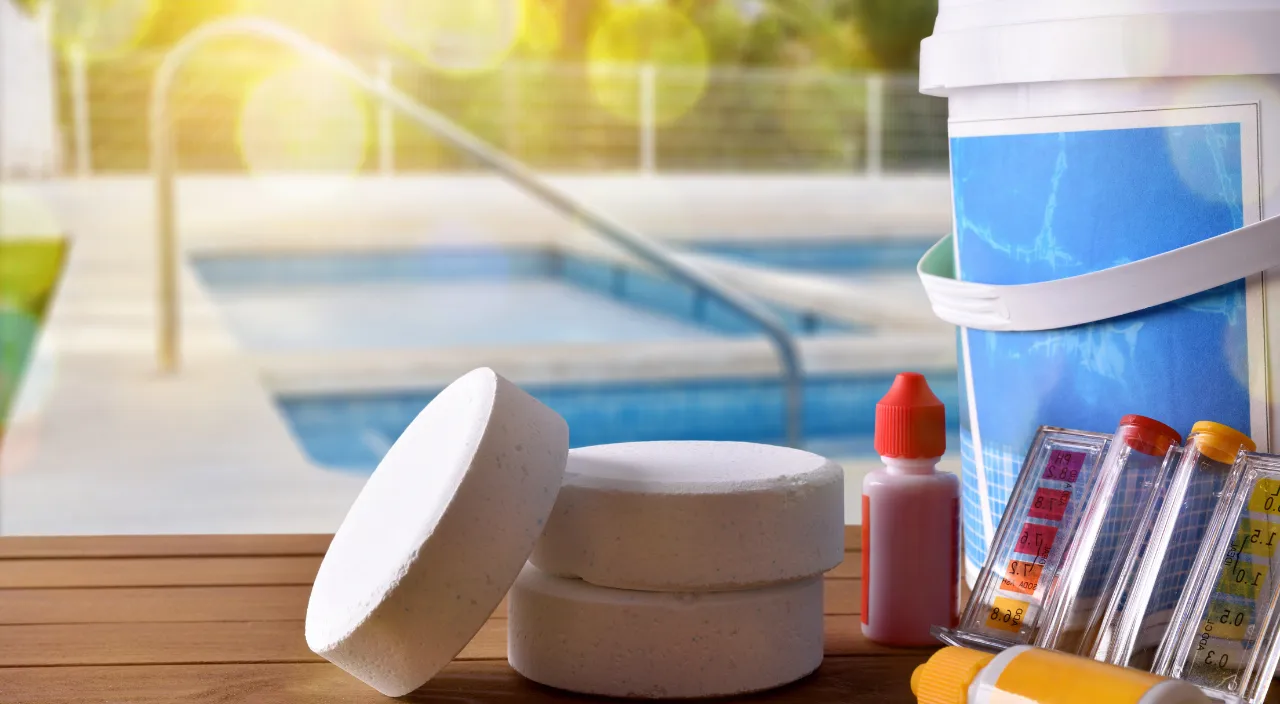Daily Pool Maintenance
Imagine coming home after a long, exhausting day and diving into a crystal-clear pool that feels like a private oasis in your backyard. This sense of tranquility and pleasure is only possible when you maintain your pool in pristine condition, but we know many people believe this is complicated or time-consuming.
The truth is that daily pool maintenance doesn’t have to be rocket science. With just a few minutes each day and the right steps, you can guarantee always clean, safe, and inviting water for your entire family. The secret lies in establishing a consistent routine that prevents problems before they appear.
In this article, you’ll discover exactly how to transform pool care into a simple and efficient task. We’ll reveal the 5 essential steps that professionals use to keep pools always perfect, plus practical tips that will save you time and money.
Key Takeaways: Daily Pool Maintenance
- Daily surface cleaning removes 80% of debris that causes water problems
- pH testing should be done daily to maintain balanced water between 7.2 and 7.6
- Wall brushing prevents algae formation and permanent staining
- Skimmer cleaning ensures proper circulation and filtration system efficiency
- Visual monitoring allows you to identify problems before they become costly to solve
- 10-minute daily routine is sufficient to maintain always clean water
- Prevention is more economical than emergency corrective treatments
Why Daily Maintenance is Fundamental
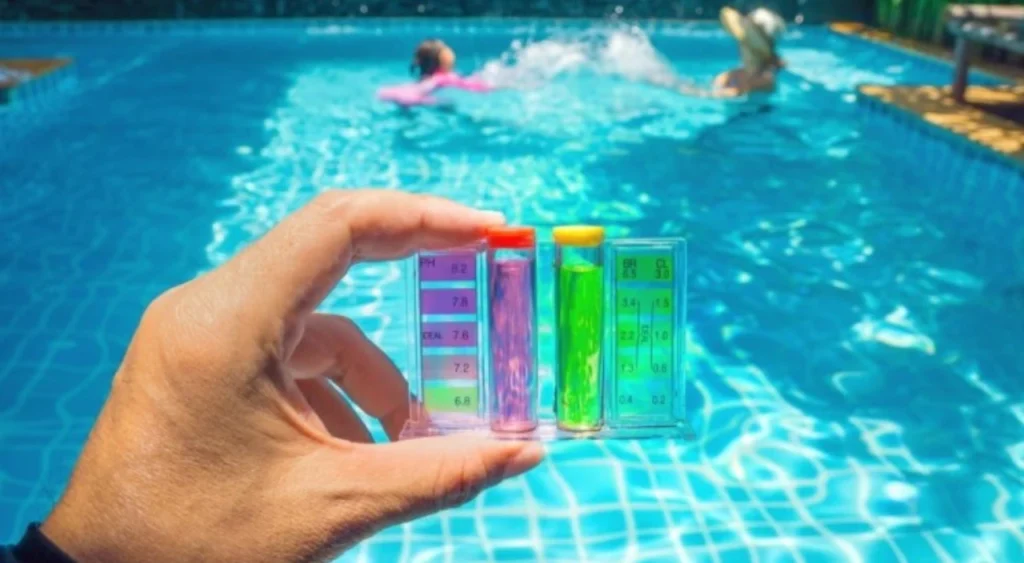
Daily pool maintenance is like taking care of your health – small consistent habits prevent major future problems. When you neglect daily care, debris accumulates, pH becomes unbalanced, and microorganisms find a perfect environment to proliferate.
Pools that receive daily attention maintain stable water quality, drastically reducing the need for harsh chemicals. This means savings in your pocket and a more pleasant swimming experience for your family.
Clean water also protects your pool’s filtration system. When debris and contaminants are removed quickly, pumps, filters, and heaters work more efficiently and last longer. It’s an investment in equipment longevity.
“A well-maintained daily pool can last decades without serious structural problems, while neglected pools often require costly repairs within just a few years.”
Step 1: Surface Debris Removal
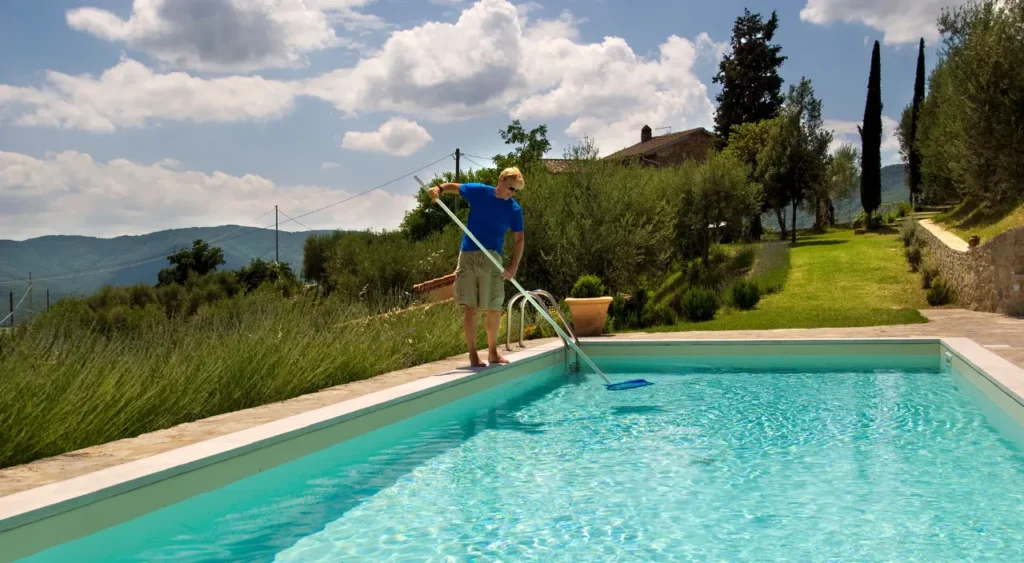
The first and most visible step of daily maintenance is removing leaves, insects, and other debris floating on the surface. This simple process prevents organic materials from decomposing in the water, altering its chemistry and creating an environment conducive to algae.
Use a telescopic net to make a complete sweep of the surface. Start from the edges and work toward the center, collecting everything that shouldn’t be there. This process takes only 2-3 minutes but makes an enormous difference in your pool’s appearance and health.
Organic debris like leaves contain tannins that can stain pool surfaces if not removed quickly. Additionally, they consume free chlorine, forcing you to add more chemicals to maintain always clean water.
Essential Equipment for Surface Cleaning
For efficient surface cleaning, you need the right tools. A fine mesh net captures even the smallest debris, while models with plastic edges protect your pool’s surface.
Invest in a quality telescopic pole that reaches all corners of your pool without straining your back. Extendable models are ideal for pools of different sizes and shapes.
Step 2: pH Testing and Adjustment
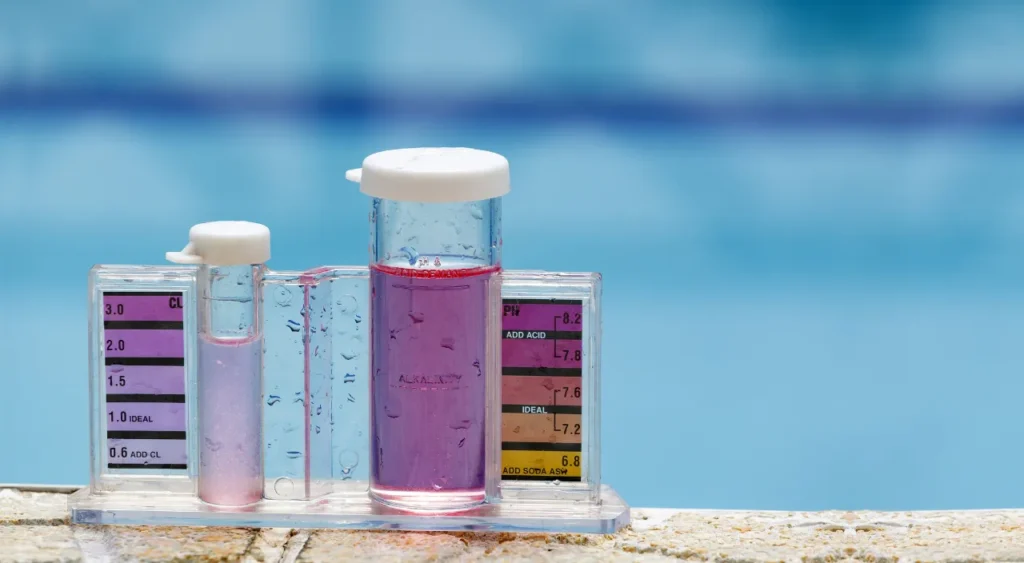
pH control is absolutely critical for maintaining safe and comfortable water. pH should remain between 7.2 and 7.6 to ensure chlorine works effectively and water doesn’t cause eye and skin irritation for swimmers.
Test pH daily using test strips or a digital kit. Testing takes less than a minute but provides vital information about your water’s condition. Water with too high pH (above 7.8) reduces chlorine effectiveness, while too low pH (below 7.0) can corrode equipment.
To adjust pH, use specific products available at specialty stores. pH decreaser (muriatic acid) for alkaline water and pH increaser (sodium carbonate) for acidic water. Always add chemicals with the pump running for uniform distribution.
READ ALSO: How to Calculate the Ideal Amount of Chlorine for Your Pool: Complete 2025 Guide
Factors That Affect Pool pH
Several elements influence your pool’s pH balance. Acid rain, cleaning products, swimmers’ sunscreen, and even CO2 from the air can alter these levels.
The number of people using the pool also impacts pH. Body oils, cosmetics, and even sweat introduce substances that unbalance water chemistry.
Understanding these factors helps you anticipate changes and make preventive adjustments, maintaining always clean water with less effort.
Step 3: Wall and Edge Brushing
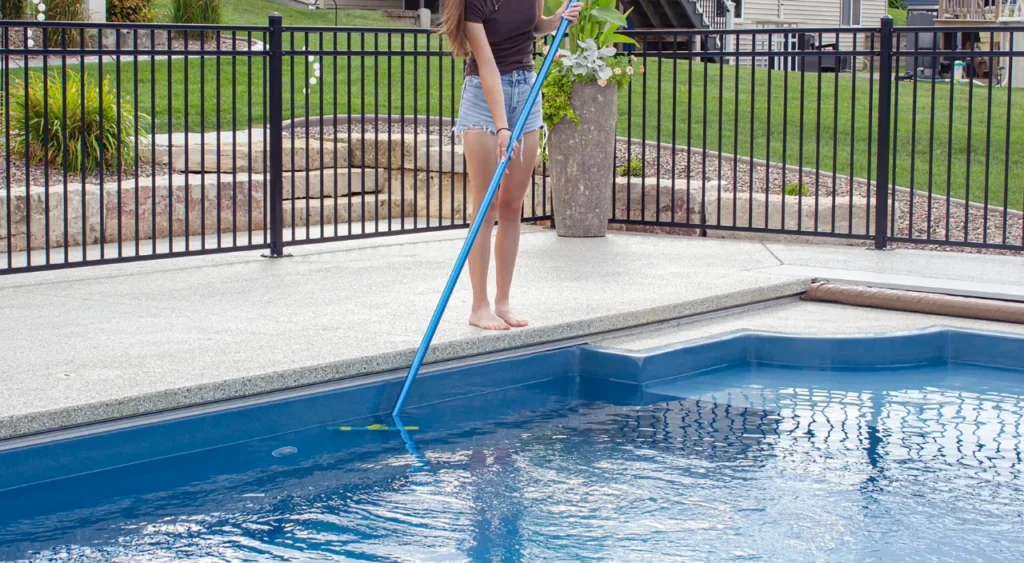
Daily brushing of walls, edges, and steps is a frequently neglected but extremely important step. Microscopic algae and biofilms begin forming on these surfaces long before they’re visible to the naked eye.
Use an appropriate brush for your pool’s surface type. Stainless steel bristle brushes are ideal for concrete and gunite, while nylon brushes are recommended for vinyl and fiberglass. Brushing removes contaminants that the filtration system cannot reach.
Focus especially on areas with poor water circulation, such as corners, behind stairs, and near returns. These dead zones are where problems usually begin. A quick but thorough brushing takes only 3-4 minutes.
Proper Brushing Technique
To maximize efficiency, always brush from top to bottom, allowing loose debris to be captured by the filtration system. Use long, firm strokes, overlapping each pass to avoid leaving uncleaned areas.
Vary your brushing pattern – sometimes horizontal, sometimes diagonal. This ensures you remove contaminants stuck at different angles on the surface.
Step 4: Skimmer Cleaning
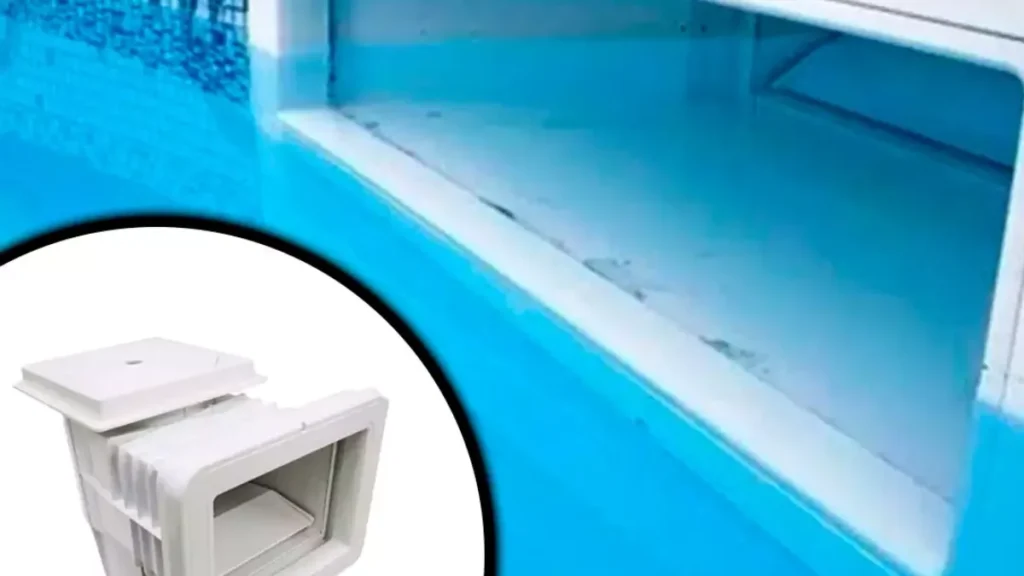
The skimmer is your pool’s first line of defense against contaminants. Cleaning the skimmer basket daily maintains optimized water flow and prevents debris from returning to the pool.
Remove the basket and completely empty its contents. Rinse with running water to remove stuck residue. A clean skimmer basket allows more water to pass through the filtration system, improving overall water quality.
Take this opportunity to check the water level. The ideal level should be at the middle of the skimmer opening. Water too low can damage the pump, while too high reduces surface debris collection efficiency.
Signs of Skimmer Problems
Watch for signs indicating system problems. Reduced water flow, strange pump noises, or debris not being collected may indicate blockages or malfunctions.
Preventive skimmer maintenance prevents expensive repairs and keeps your pool functioning perfectly. Replace damaged baskets immediately – a cracked basket allows debris to pass directly to the filtration system.
Step 5: Visual Water Monitoring
Visual monitoring is a skill every pool owner should develop. Healthy water should be crystal clear, with good visibility to the deepest part of the pool.
Observe water color – greenish tones indicate algae growth, while cloudy water suggests filtration or chemical balance problems. Wall stains may indicate pH problems or metal presence in the water.
Also pay attention to smell. Well-treated water should have a mild chlorine odor. Strong chlorine smell paradoxically indicates too little free chlorine available, as chlorine is being consumed by contaminants.
Daily Visual Checklist
| Aspect | Ideal Condition | Problem Signs |
|---|---|---|
| Transparency | Bottom clearly visible | Cloudy or milky water |
| Color | Crystal blue | Green, yellow, or brown |
| Foam | Absent | Persistent surface foam |
Develop the habit of doing this visual check every time you pass by the pool. Over time, you’ll become expert at identifying problems before they become serious.
Complementary Weekly Schedule
While daily maintenance is fundamental, some weekly tasks perfectly complement your routine. Complete water testing (chlorine, alkalinity, calcium hardness) should be done weekly for more precise adjustments.
Pool filter cleaning may be necessary weekly or bi-weekly, depending on usage and environmental conditions. A clean filter is essential for maintaining always clean water and reducing daily workload.
- Monday: Complete water testing and chemical adjustments
- Wednesday: Deep filter cleaning if necessary
- Friday: Complete bottom vacuuming
- Sunday: General equipment inspection
Essential Equipment and Products
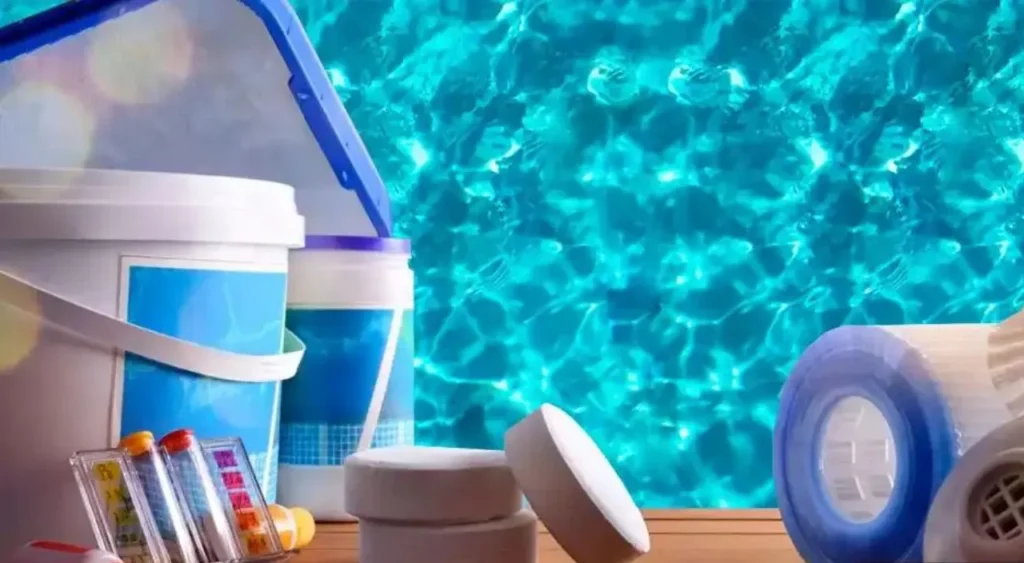
To execute efficient daily maintenance, you need the right equipment. Investing in quality tools saves time and ensures better long-term results.
- Fine mesh telescopic net
- pH test kit (strips or digital)
- Appropriate brush for your pool type
- Basic chemicals (pH decreaser and increaser)
- Floating thermometer for monitoring
Keep all equipment organized in an easily accessible location. A 10-minute daily routine becomes even more efficient when you don’t need to search for tools.
“The initial investment in quality equipment pays for itself quickly through reduced chemical usage and prevention of costly problems.”
Saving Time and Money
Daily preventive maintenance is significantly more economical than corrective treatments. When you maintain balanced water consistently, you use fewer chemicals and avoid the need for expensive shock treatments.
Problems like green algae water can cost hundreds of dollars in chemicals and lost time. In contrast, daily prevention costs pennies and a few minutes of your day.
Equipment also lasts longer when water is always clean. Pumps, filters, and heaters work more efficiently in well-treated water, reducing energy and maintenance costs.
Transform Your Pool into a Permanent Oasis
Implementing a daily pool maintenance routine completely transforms your experience as an owner. Instead of constantly worrying about problems, you can relax knowing your pool is always ready for use.
The 5 essential steps – debris removal, pH testing, brushing, skimmer cleaning, and visual monitoring – create a care system that works preventively. With just 10 minutes a day, you guarantee always clean water and safety for your family.
Remember: consistency is more important than perfection. It’s better to do basic maintenance every day than complete cleaning sporadically. Your pool, your family, and your wallet will thank you for this dedicated daily care.

